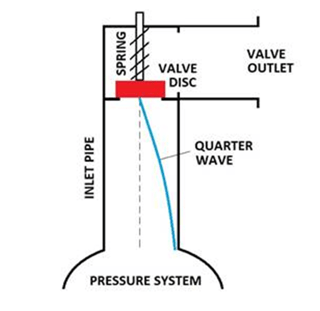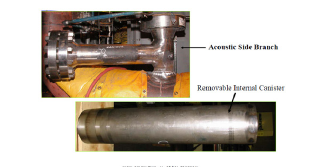By: Jens Conzen, Director, Plant Services & Ken Kurko, Director, Process Safety Services Fauske & Associates
Chemical process plants must be protected from overpressure hazards. This is particularly important for reactive processes in which the pressure can rapidly build up if a runaway reaction were to occur. The overpressure protection is achieved by installing a relief device, which can be a rupture disk or a pressure relief valve. It is important that the relief device is properly sized to assure that adequate capacity is available to relieve the effluent. A common issue in the industry is chattering of direct spring operated safety relief valves (DSOSRVs) during the relief event. In a DSOSRV the valve closing force is provided by a spiral spring that is compressed by a screw. Once the fluid pressure at the inlet of the valve exceeds the pressure from the spring force the valve disc will lift, which opens a path for depressurization. The disc should fully lift to provide the nominal relief area if the valve is adequately sized. For oversized valves, the disc might lift only partially and essentially floats on the flow. The pressure feedback in the system will eventually cause an instability that can cause the valve disc to open and close rapidly resulting in flutter or chatter. The white noise generated at the valve trim may also contribute to the instability. Flutter is characterized by a high frequency oscillation of the valve disc where the disc does not fully open or close. Chatter is a more violent oscillation where the valve disc repeatedly slams into the valve seat. Chatter can result in valve damage. This can have dangerous consequences such as a stuck open safety valve that would result in the failure to contain hazardous materials, for example.
Since engineers have to be conservative during the sizing calculation (e.g. rounding up the relief area to the nearest commercial pipe size), it can be assumed that most relief valves are slightly oversized, and therefore, prone to valve chatter due to the starvation of capacity. Recent experimental research [1] has demonstrated that the frequency of chatter is dictated by the quarter wave frequency of the inlet pipe. The quarter wave is a standing wave that is defined by the geometry of the inlet pipe. It is an acoustic phenomenon that is analogous to an organ pipe. Figure 1 illustrates a schematic of a DSOSRV with the quarter wave.
 Figure 1:
Figure 1:
A similar issue of SRV vibration has been observed in the nuclear industry. In a boiling water reactor (BWR) plant, SRVs are typically located along the main steam pipe. The steam that flows through the steam pipe can cause vortices at the leading edge of the SRV inlet pipe (or stand pipe) that would occur at a constant frequency. If the frequency of the vortex shedding coincides or is close to the quarter wave frequency of the inlet pipe, an acoustic resonance occurs. This has been observed in particular after power uprate programs where the steam flow velocity was increased. Although the excitation mechanisms are different when we compare the chemical process facility application with the nuclear plant application, the response is similar. Hence, one solution could work for both applications. Nuclear facilities have installed acoustic side branches (ASBs) to mitigate the resonance. It is hypothesized that an ASB installed at the inlet pipe of a DSOSRV could also have a stabilizing effect resulting in improved valve performance. Figure 2 illustrates an ASB that was installed in a nuclear power facility.

Figure 2: Source: http://www.intechopen.com/source/html/6732/media/image74.png
The acoustic aide branch consists of a piece of pipe that is capped with a blind flange. A removable canister that contains acoustic damping material is inserted into the ASB. The acoustic side branch has two major functions: 1) provide damping to reduce the amplitude of vibration and 2) to provide disturbance to disrupt the quarter wave. If designed correctly, it could also be used to generate an interference wave that could have a canceling effect on the quarter wave and provide further mitigation. Acoustic side branch technology is documented in US patent US 8393437B2 which is assigned to the Westinghouse Electric Company LLC, the owner of FAI. FAI is the acoustic testing laboratory for Westinghouse and FAI has been involved with the design and testing of ASBs.
FAI is currently performing proof-of-concept tests in our acoustic and thermal hydraulic laboratory. It is the objective to find out if acoustic side branches can be a viable option to improve relief valve stability for chemical plant applications. For more information, please contact Jens Conzen at conzen@fauske.com or 630-887-5203
References
[1] C.J. Hös et. al, Dynamic behavior of direct spring loaded pressure relief valves in gas service: Model development, measurements and instability mechanisms. Journal of Loss Prevention in the Process Industries, Edition 31, 2014
[2] C.G. Moreno, Turbulence, Vibrations, Noise and Fluid Instabilities. Chapter 5 of Computational Fluid Dynamics (ISBN: 978-953-7619-59-6)



